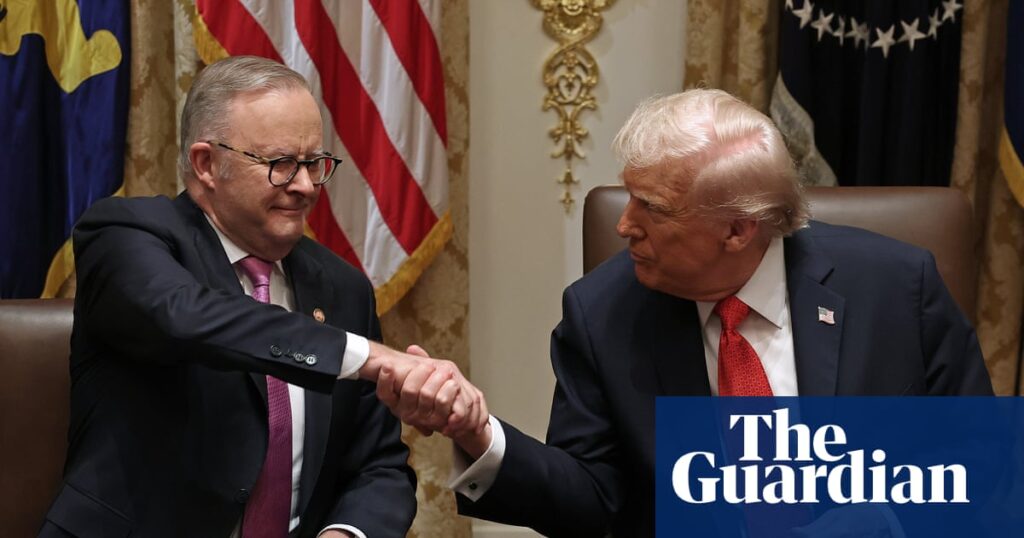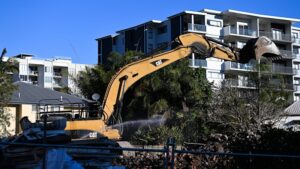
In a significant move to counter China’s dominance in the critical minerals sector, Australia and the United States have signed a landmark agreement to bolster their supply chains. This partnership aims to reduce reliance on Chinese imports, particularly in the production of strategic minerals such as gallium and rare earth elements. The announcement was made during a high-level meeting between Australian Prime Minister Anthony Albanese and US officials, marking a pivotal step in the geopolitical landscape of mineral resources.
The deal highlights two “priority projects” in Australia, which will receive substantial investments from both governments. These initiatives are part of a broader strategy to diversify the global supply of critical minerals, which are essential for advanced technologies and military applications.
Australia’s Priority Projects: A New Era for Gallium and Rare Earths
Prime Minister Albanese emphasized the importance of two specific projects: a proposed gallium plant in Western Australia and the Arafura Rare Earths project in the Northern Territory. The gallium plant, to be co-located at an Alcoa alumina refinery, will receive up to $200 million in investment from the Australian government, with the US also acquiring an ownership stake. Japan has joined as a project partner, further underscoring the international interest in diversifying gallium production.
Gallium is a critical component in modern technologies, including military equipment such as missile guidance systems and radar. Currently, the US is wholly dependent on imports, with China holding near-complete control over gallium production. This initiative seeks to challenge that monopoly and secure a more stable supply chain.
According to the Atlantic Council, “The US briefly had a dedicated gallium mine in the 1980s, but it proved unsustainable.”
Meanwhile, the Arafura Rare Earths project, backed by Australia’s wealthiest individual, Gina Rinehart, is set to receive a $100 million equity injection from the Australian government. The project aims to produce neodymium and praseodymium oxides, crucial for manufacturing rare-earth magnets used in wind turbines, medical devices, and electric motors. The US government is considering an investment of up to $300 million, pending further due diligence.
Breaking China’s Monopoly on Rare Earths
China’s dominance in the rare earths market has long been a point of contention, as the country controls nearly 90% of the global supply of rare-earth magnets and the refining processes needed to make these minerals useful. Recent supply curbs have highlighted the world’s reliance on Chinese exports, prompting nations like Australia and the US to seek alternative sources.
Australia’s efforts to develop its rare earths processing capabilities are gaining momentum, with support for projects like Lynas’ facility in Western Australia and Iluka’s oxide production initiative. However, experts caution that Australia must move beyond merely extracting raw materials to establish a robust manufacturing sector for critical minerals.
Tim Buckley, director of Climate Energy Finance, stated, “It is urgent to position Australia as more than a quarry digging and shipping our raw commodities.”
Strategic Implications and Economic Opportunities
The new framework is designed to prioritize deliveries to American and Australian buyers, reducing the influence of China as the dominant purchaser of high-grade magnet materials. The mix of government and public shareholder funding raises questions about market dynamics, particularly regarding pricing strategies.
Non-Chinese resources companies have long criticized Beijing’s control over benchmark pricing, which can hinder new projects by keeping prices artificially low. The new agreement aims to establish price floors, ensuring that critical minerals remain viable for new producers.
Already, the Australian mining sector is experiencing a surge in investor interest, with companies like Arafura seeing their share prices soar by over 150% in recent weeks. This optimism reflects hopes for a new mineral boom, driven by the strategic partnership between Australia and the US.
A representative of a critical minerals project remarked, “We are mindful of the context in which we’ve been funded and there’s an assumption we won’t be making many sales to Chinese customers.”
Looking Ahead: Challenges and Opportunities
While the deal represents a significant step forward for both nations’ economic and strategic futures, it has sparked debate within Australia. Some voices within the Labor party have expressed concerns about “selling off the family silver,” given that America will gain prime access through offtake agreements.
The lingering question remains: how will China respond to this new alliance? The global market for critical minerals is poised for transformation, with Australia and the US leading efforts to create a more balanced and resilient supply chain.
As both countries continue to navigate the complexities of this evolving landscape, the success of these projects will depend on their ability to establish sustainable and competitive production capabilities. The coming years will be crucial in determining whether this partnership can effectively challenge China’s longstanding dominance in the critical minerals sector.






